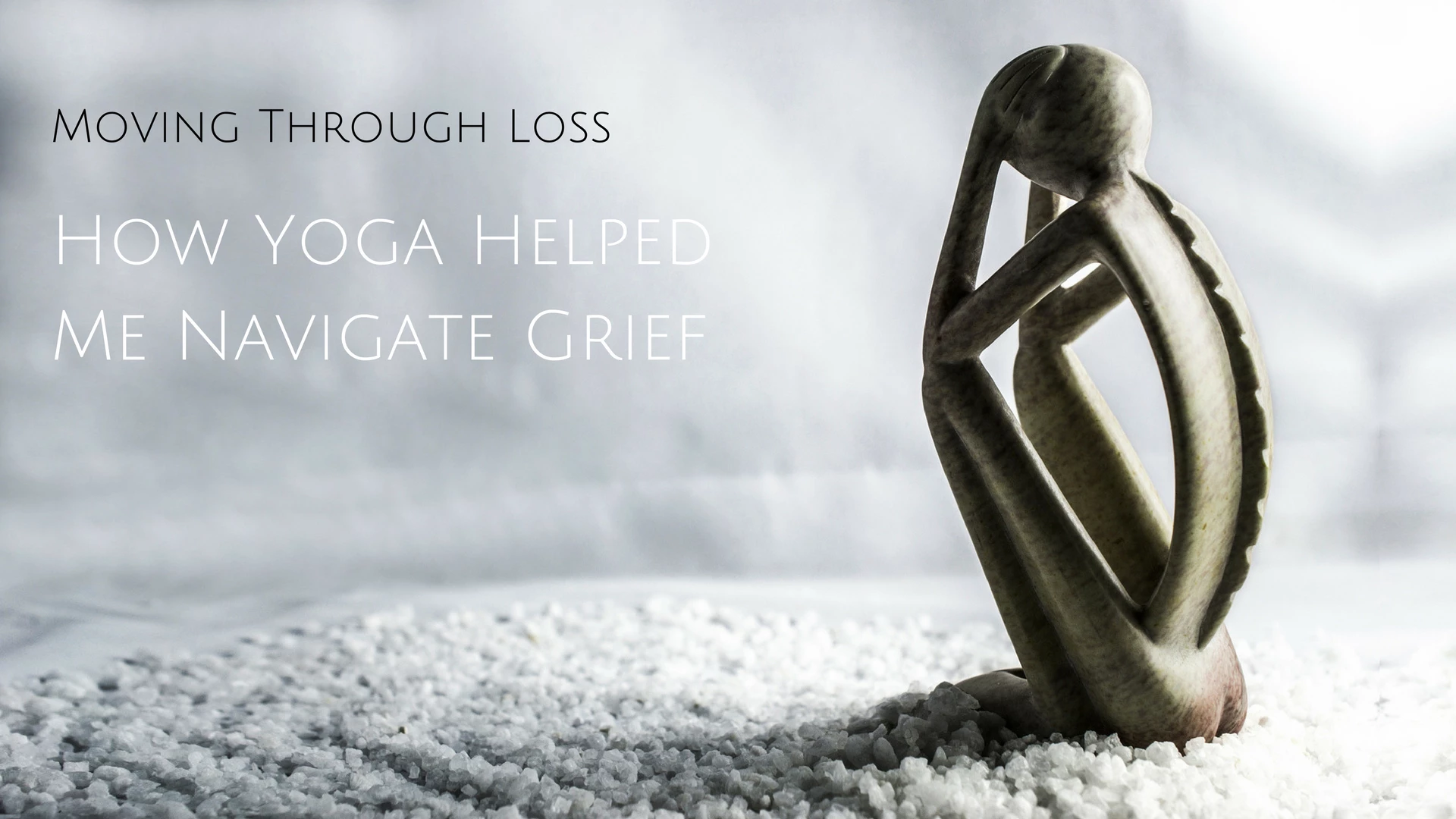Moving Through Loss: How Yoga Helped Me Navigate Grief

Three years ago I got a call saying my father was dying. He was half a world away in Jakarta and dying. I almost didn’t answer the phone—my father never called me from Jakarta, only messaged. But I did, I answered the phone. And my father was dying. My mind raced as I tried to make sense of the information coming my way: there is nothing more they could do. “There’s no time for you to come here. He might be able to hear you. Say your goodbye. We’ll let you know when he’s gone.”
This all happened in the entryway of the high-end gym where I taught yoga. People walking by to get their smoothies recoiled from my tears. This was sudden; I had phone calls to make. I had to get subs for my evening classes. I had to inform my partner. I had to inform my family.
Fifteen minutes later I was on my way home and got a text saying he had passed, “I’m sorry for your loss.” My jacket was zipped all the way to the top, scarf wrapped around my quivering face, sunglasses on to spare those around me the tears spilling down my face. My partner somehow managed to find me on public transportation (he has a knack for such things). He sat next to me and scooped me into his arms as I wept.
The next several days were a blur of grief, anger, and confusion. My father was a half a world away. There was nothing I could do. I make a living teaching yoga. If I don’t teach, I don’t get paid. My father died on a Wednesday, U.S. time, but early Thursday in Jakarta). I was back teaching yoga on Saturday.
While the studio owner, managers, and many teachers knew about my loss, I chose not to say anything about losing my father to my students. I am their teacher. It’s not their job to take care of me.
How Yoga Gives Both Strength and Respite
Honestly, teaching helped. Listening to and watching my students move and breathe allowed me to be the version of myself who hadn’t just lost her father. While I was teaching I got to be the version of myself who is an adept and skillful teacher, someone who is in service of those in front of her. That is, until their resting pose, Savasana. The moment I settled my class into Savasana, to be with themselves, I was forced to be with myself. To recognize and sit with my still raw, broken and wounded self. Tears freely streamed down my face.
The following week I returned back to my teacher’s class to practice. When I was focused on aligning my bones and using my muscles in an effective and efficient manner, I felt adept and skillful. I felt relief from my circumstances. I was feeling my body move and breathe, I was in the present moment. I was no longer the version of myself deep in grief. Then Savasana. The moment I settled into stillness and closed my eyes, my chest began to hurt, and tears freely streamed down my face.
The purpose of a yoga asana practice is to create a vessel that is strong and supple, a vessel that can be resilient and functional in everyday life. A vessel that eventually can be still with itself in whatever state it is in, and abide in that stillness. What I learned three years ago was that while my teaching and yoga practice gave me space and respite from my grief. It also gave me the strength to then move through my grief, to be resilient and to abide in my given circumstances.
More from special contributor Kate Heffernan – Befriending Your Body: It’s an Inside Job.
Asana instruction with Kate Heffernan – Join Kate on our YogaUOnline Premium Practice Channel – the practice channel geared to both students and teachers.
Reprinted with permission from kate-yoga.com
 Kate Heffernan is a Boston-based Vinyasa Flow Yoga Instructor. As a teacher, Kate is known for her ability to weave together an intelligent and well-crafted sequence that builds on a specific theme. In her Vinyasa Flow classes, students can expect to find the joy of vigorous movement married to the consciousness of precise instructions focusing on proper alignment. Kate creates a space for her students to experience their own yoga practice on any given day, whether that practice includes a more vigorous Vinyasa sequence or a cooling Yin and Restorative sequence with an extended Savasana. Kate is a lead instructor at Down Under Yoga, where she instructs public classes as well as teacher trainings.
Kate Heffernan is a Boston-based Vinyasa Flow Yoga Instructor. As a teacher, Kate is known for her ability to weave together an intelligent and well-crafted sequence that builds on a specific theme. In her Vinyasa Flow classes, students can expect to find the joy of vigorous movement married to the consciousness of precise instructions focusing on proper alignment. Kate creates a space for her students to experience their own yoga practice on any given day, whether that practice includes a more vigorous Vinyasa sequence or a cooling Yin and Restorative sequence with an extended Savasana. Kate is a lead instructor at Down Under Yoga, where she instructs public classes as well as teacher trainings.
Kate was named one of Boston’s Top 20 Yoga Instructors in 2012 by RateYourBurn.com



